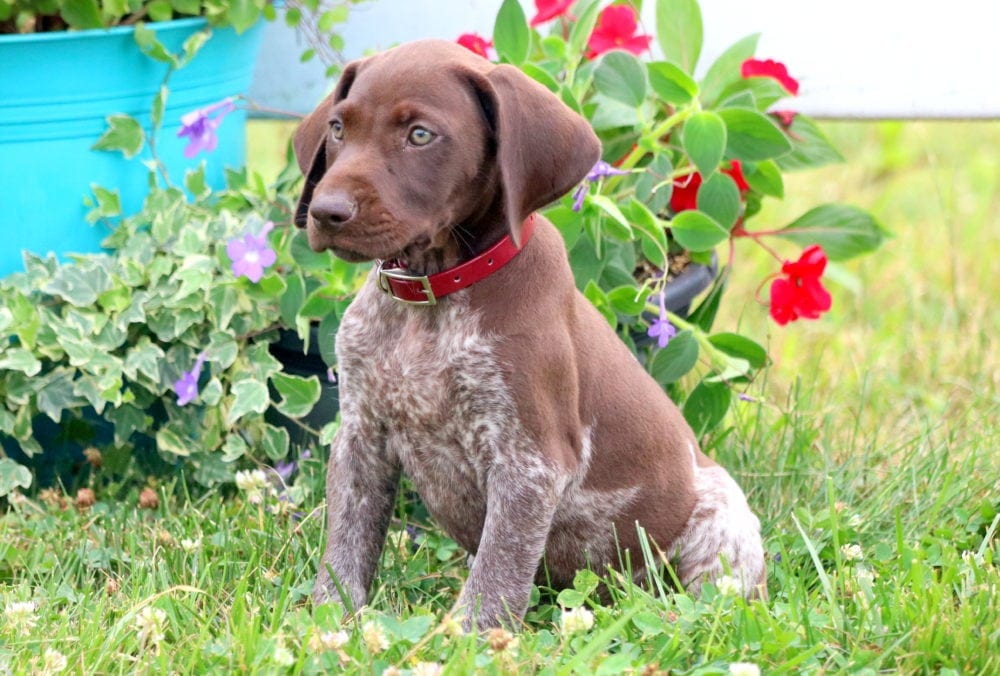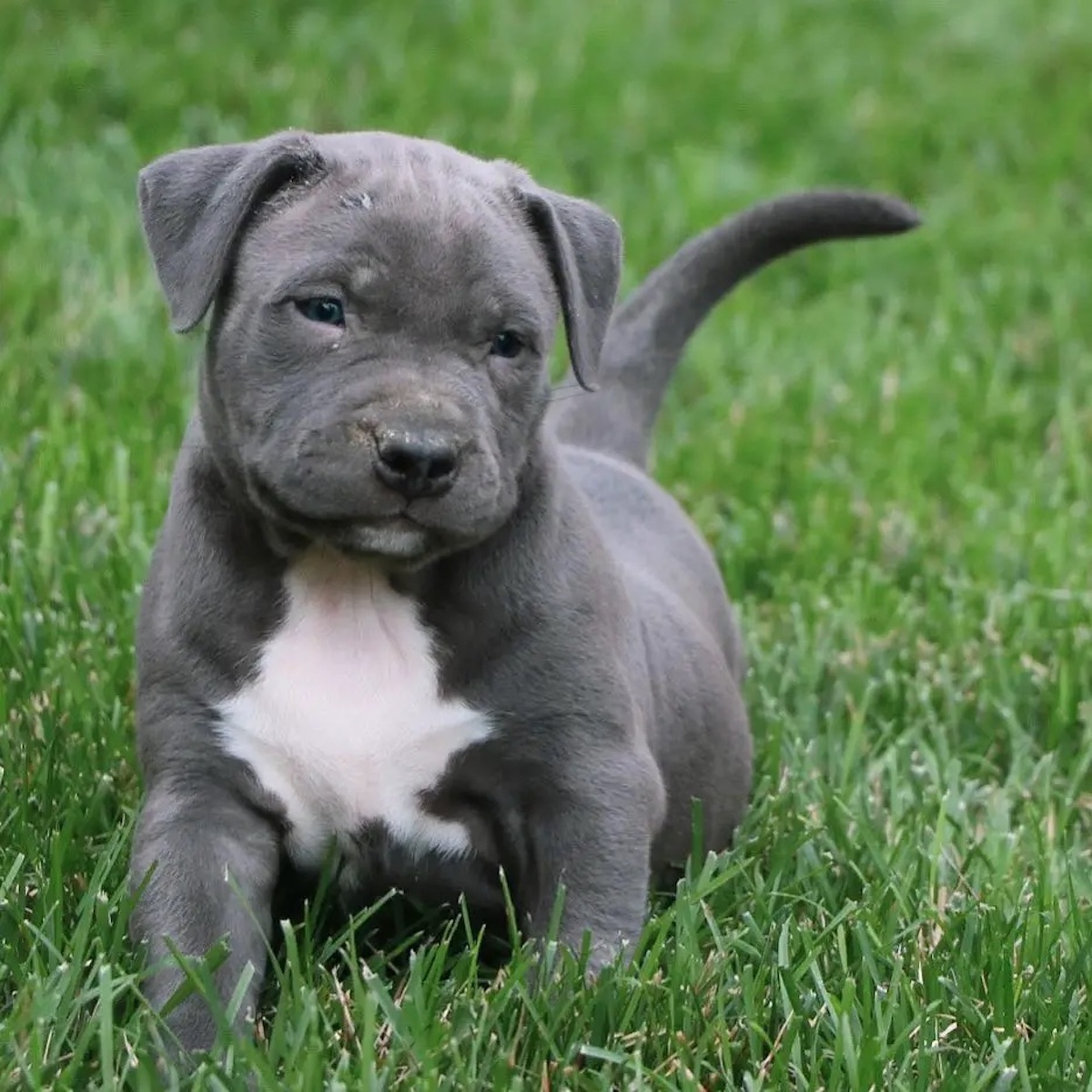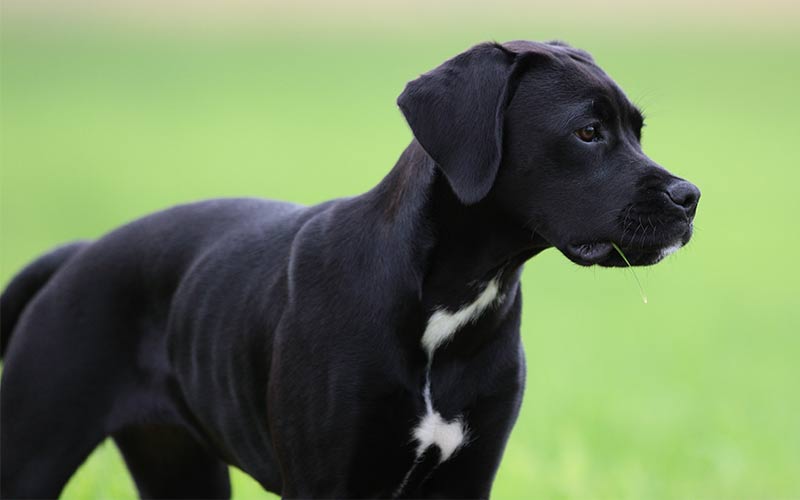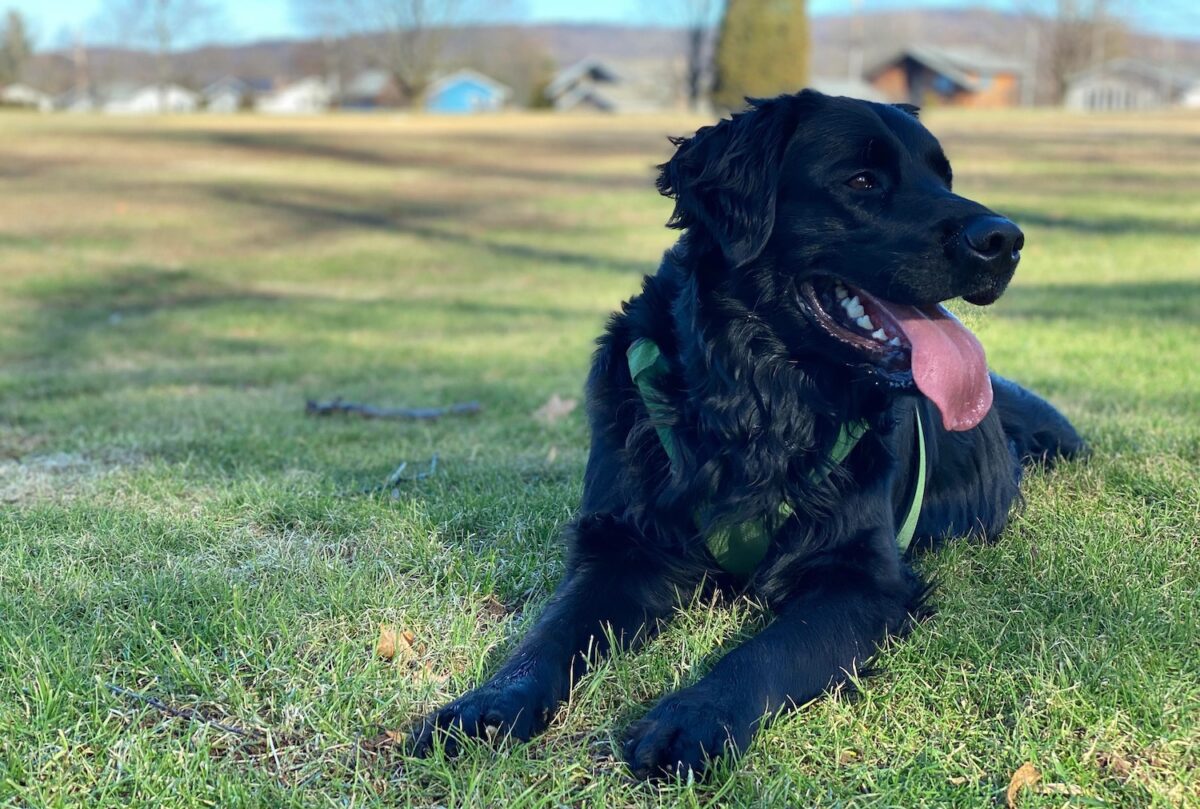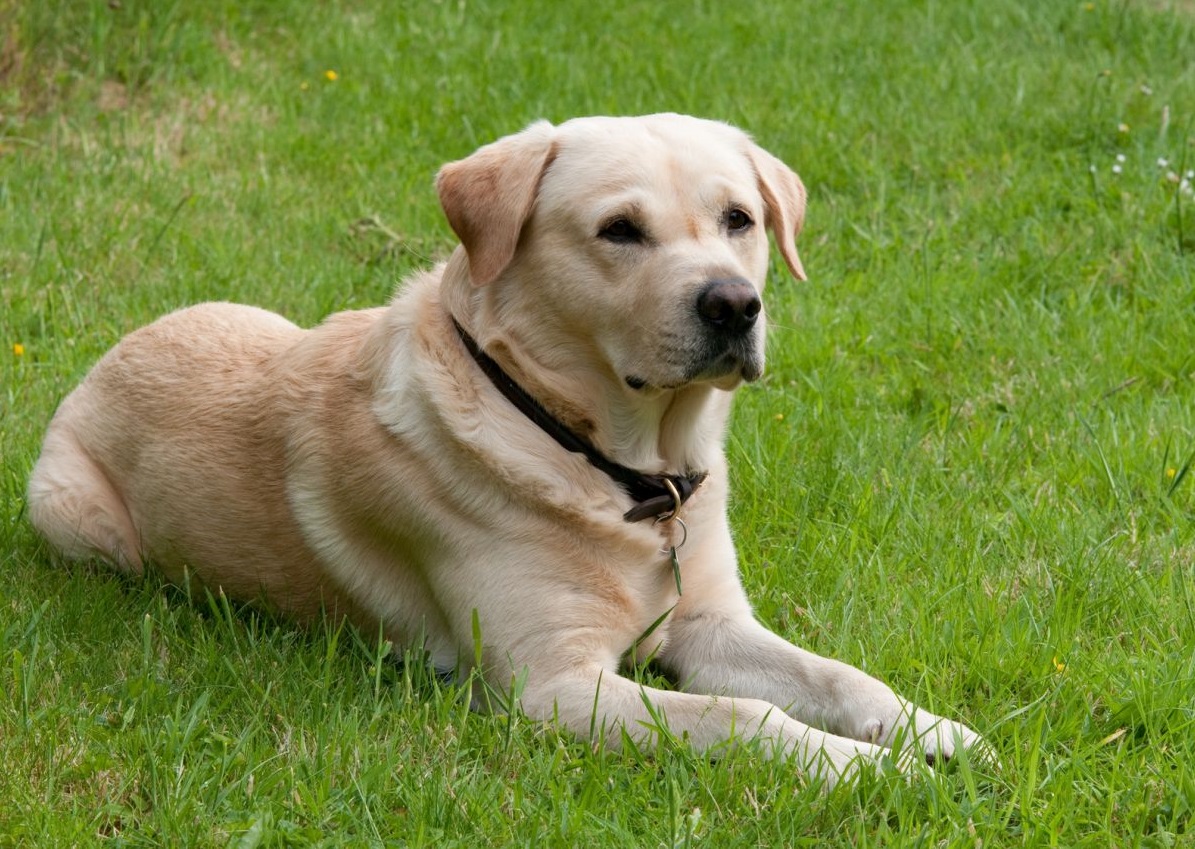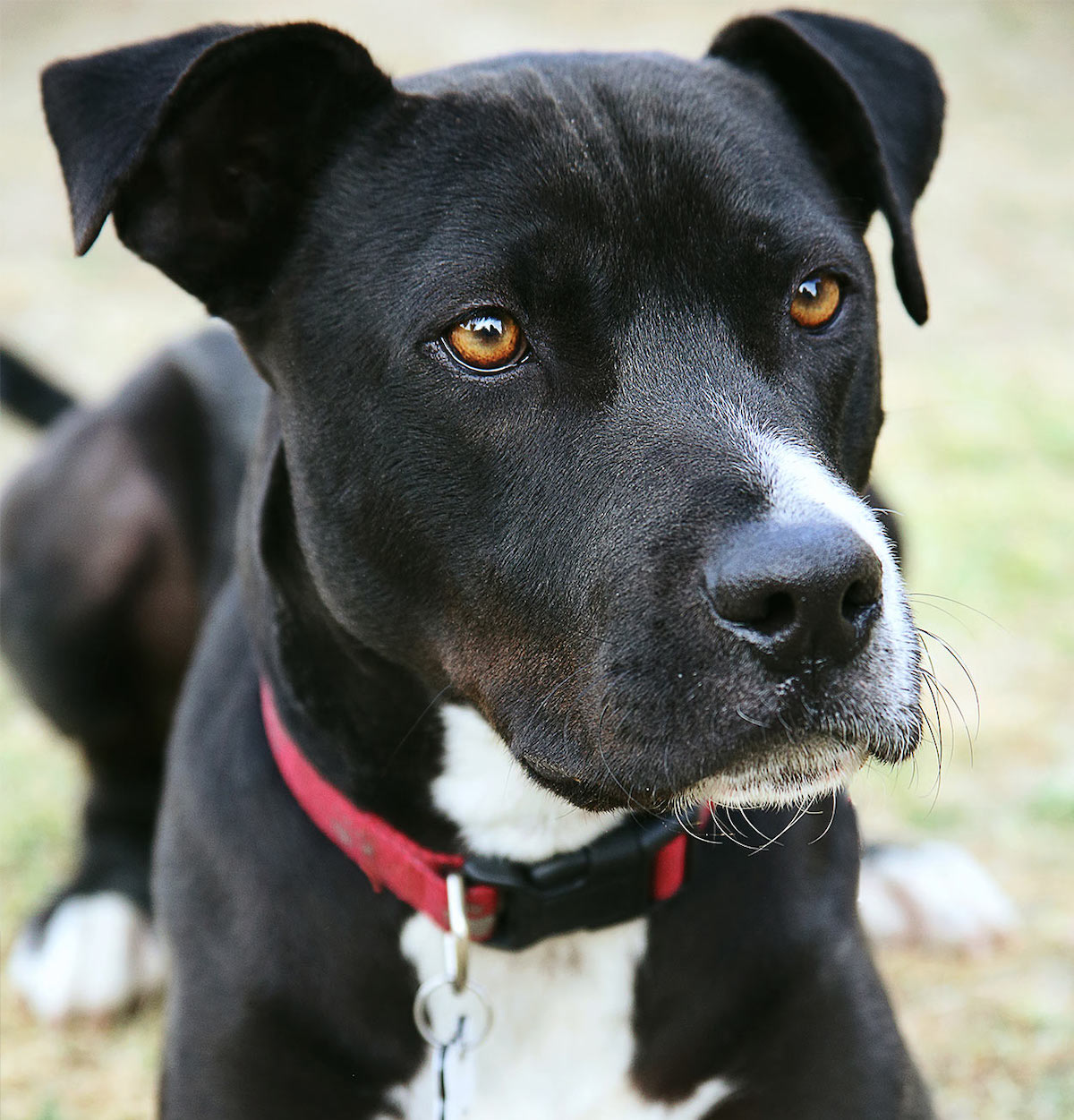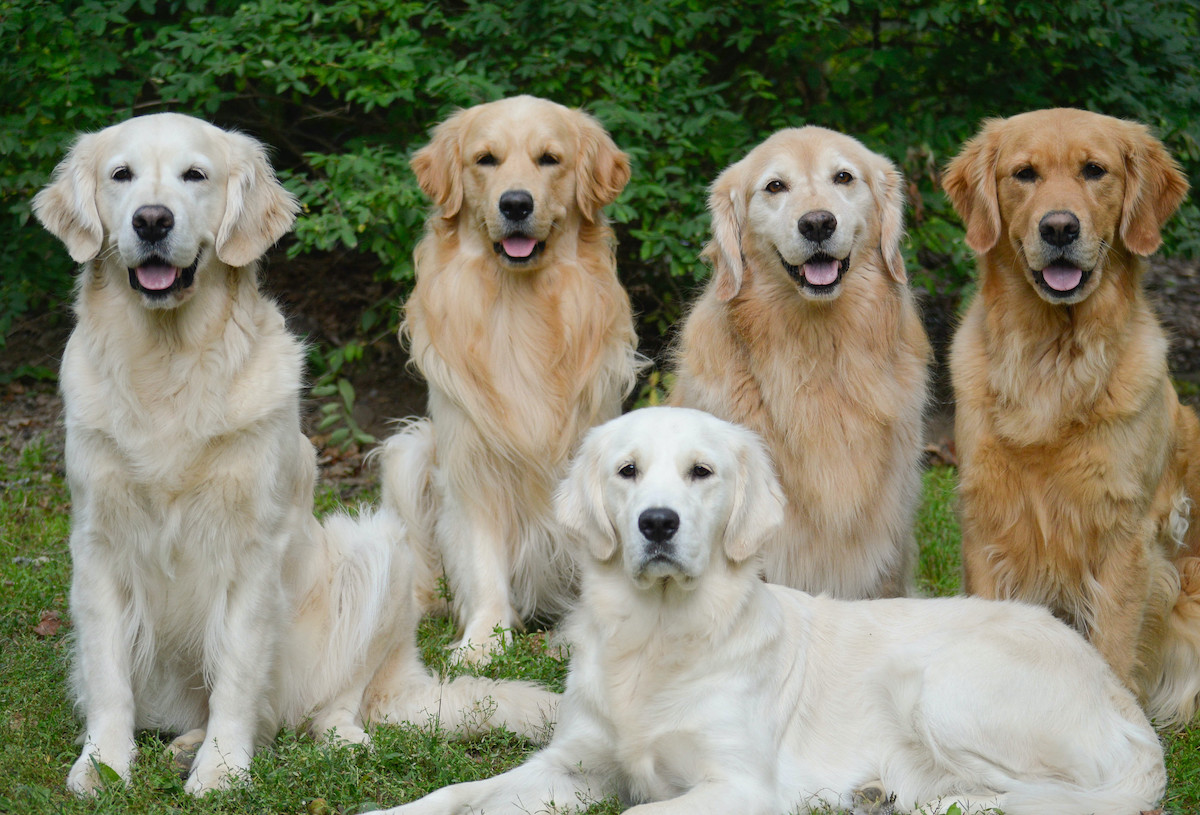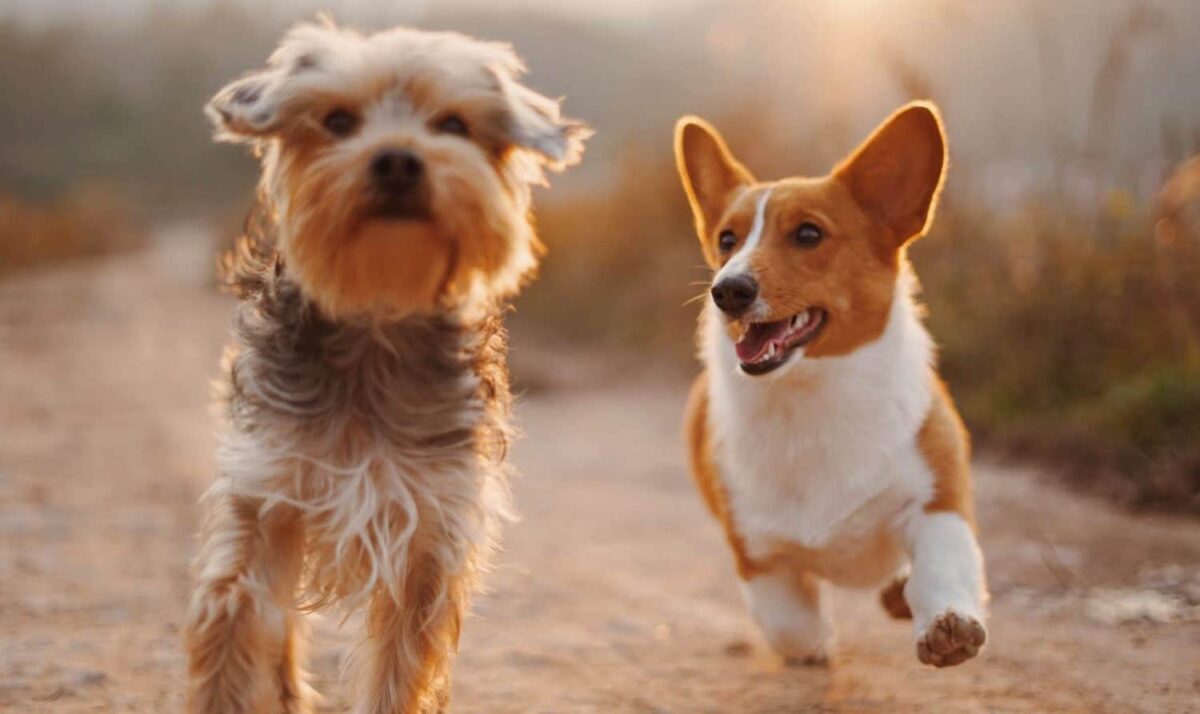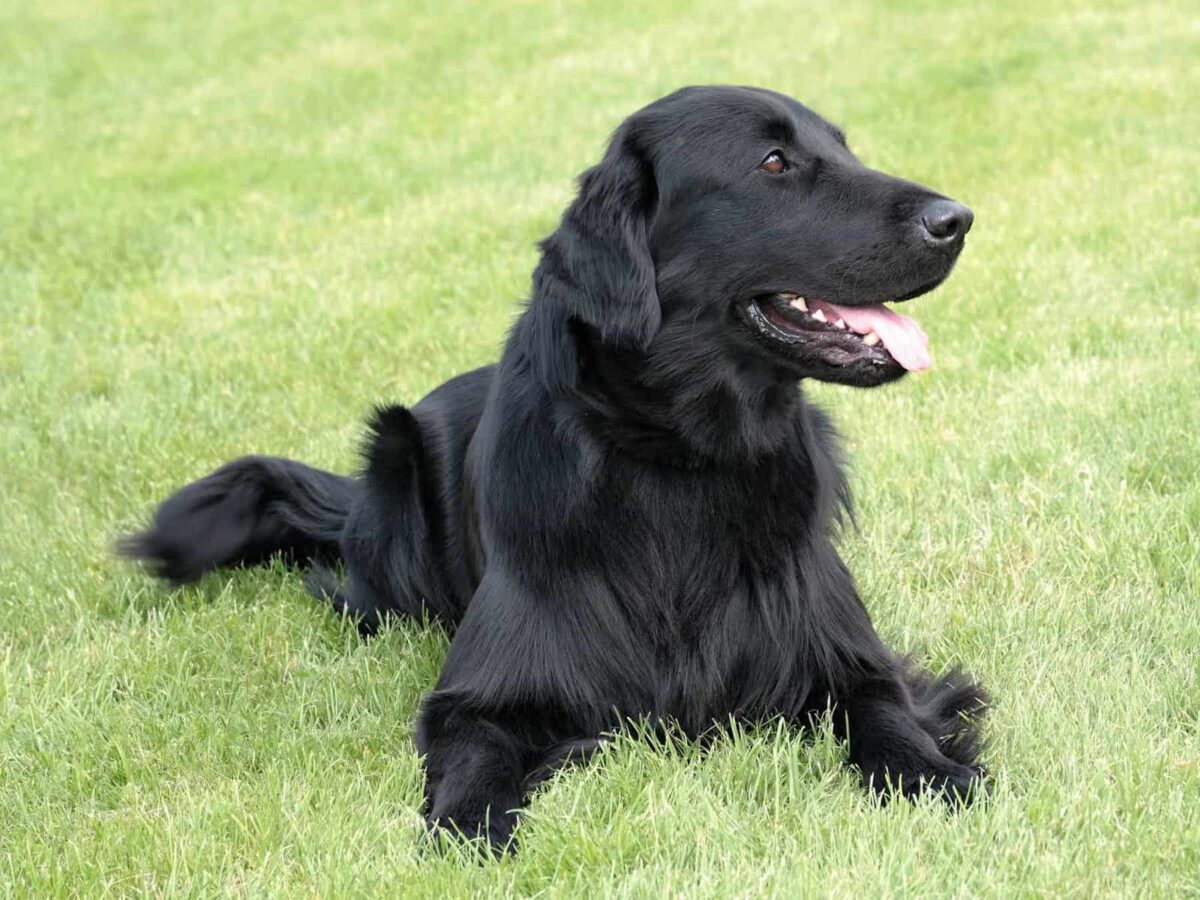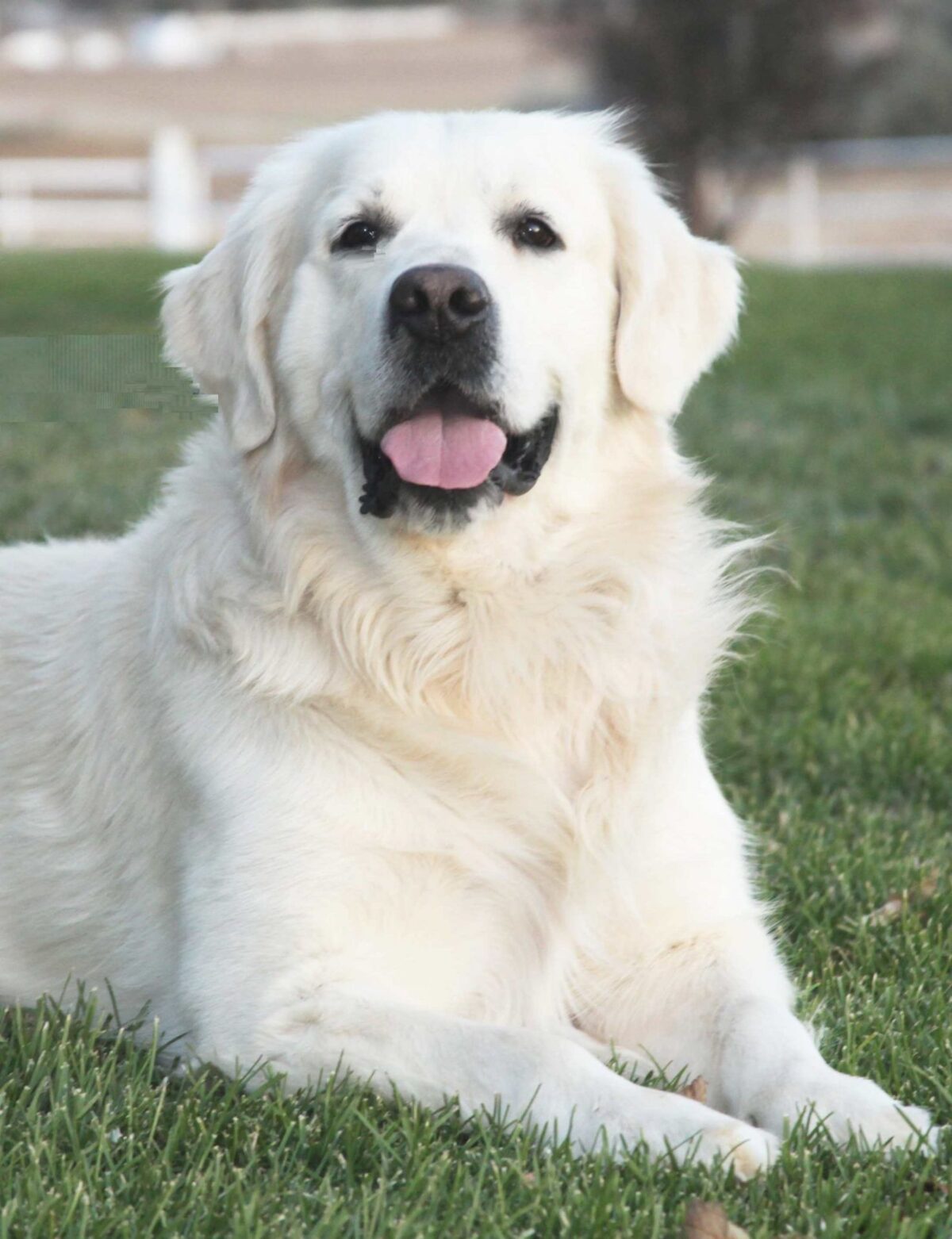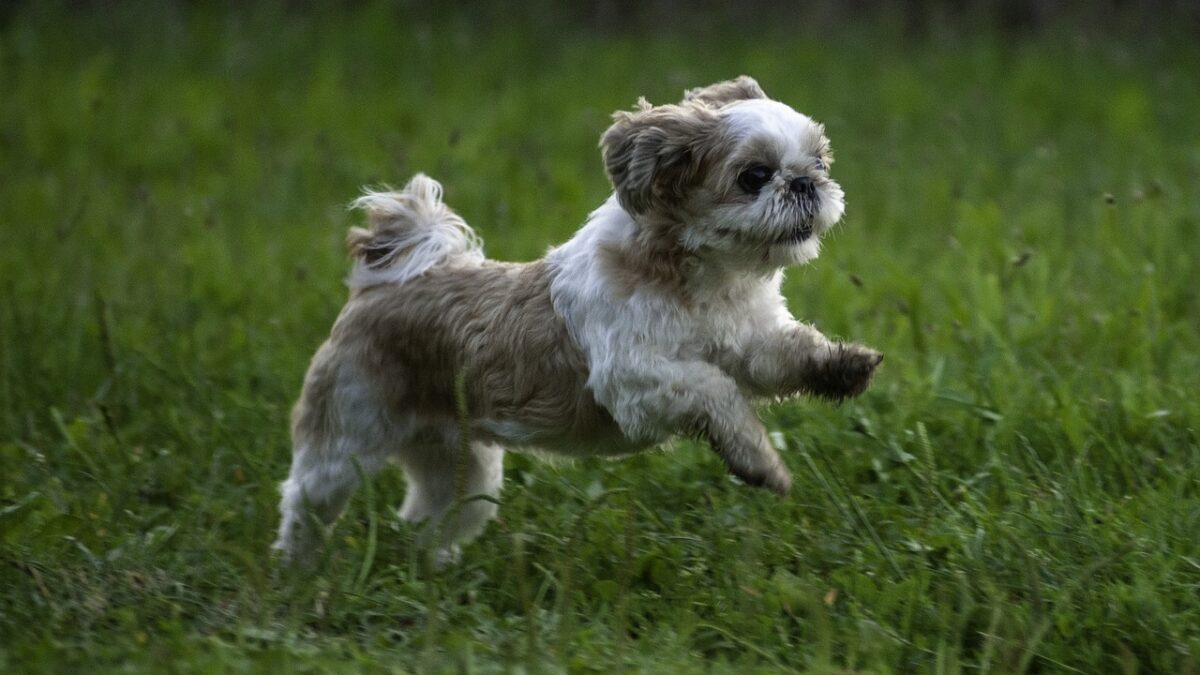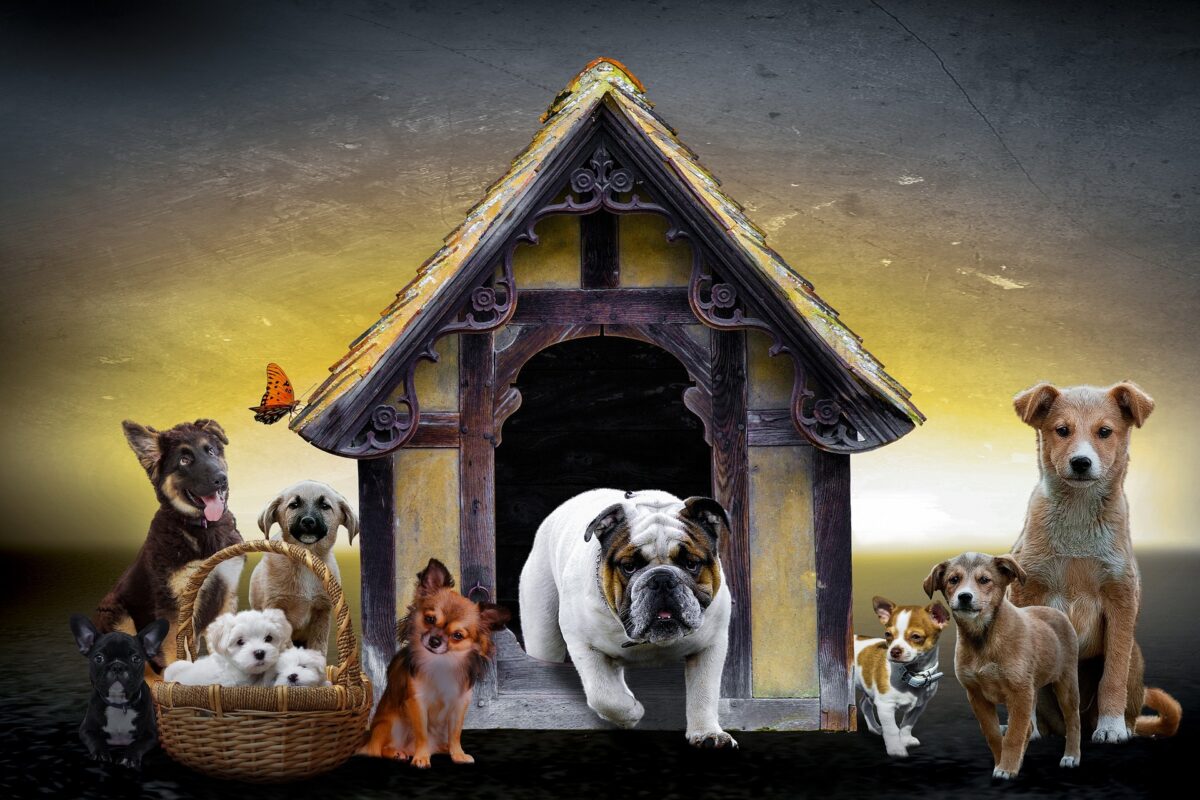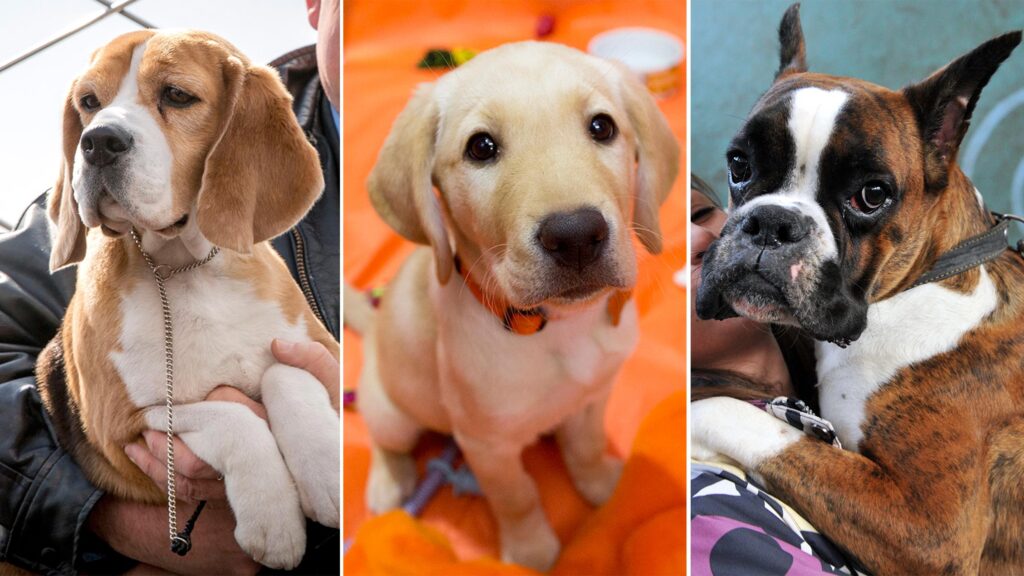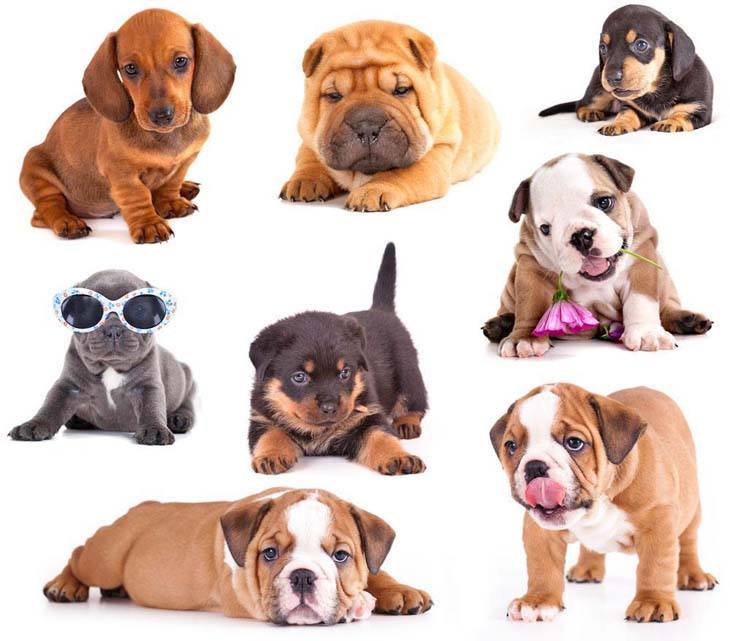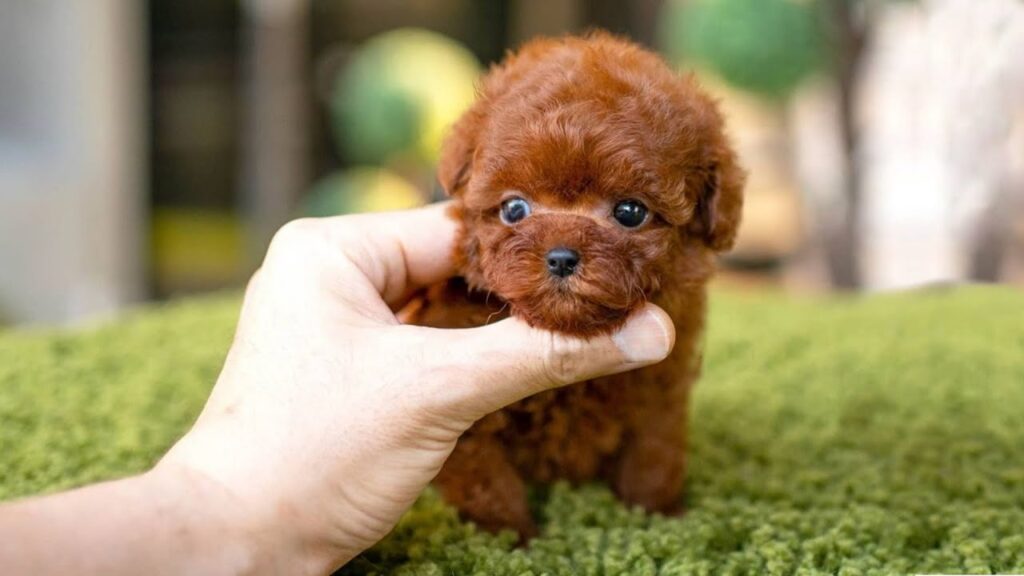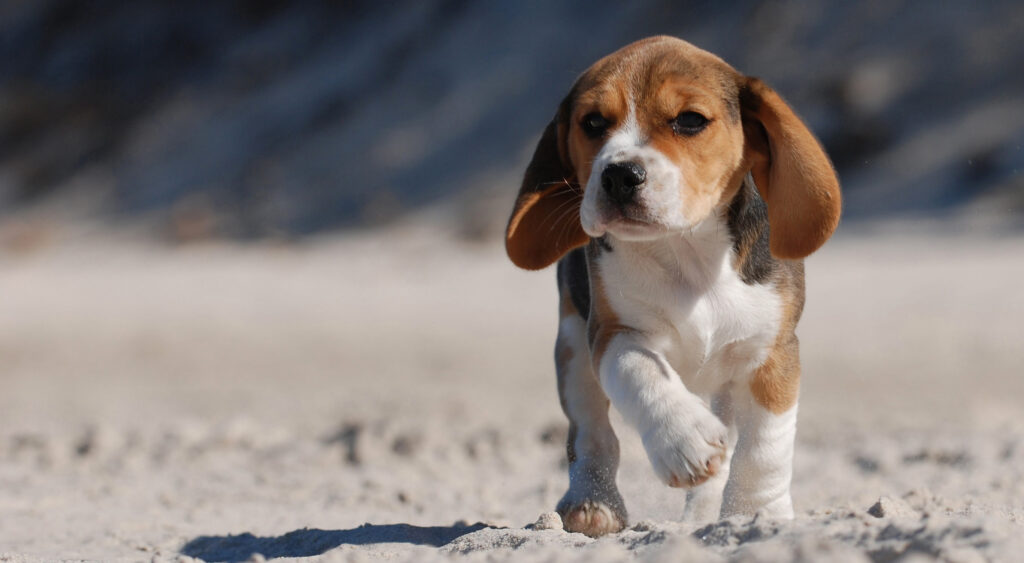German Shorthair Pointer Puppy Guide: Breed Info & Sale
Introduction
All About German Shorthaired Pointer Puppies
Thinking about getting a cute German Shorthair Pointer puppy and want to learn more about this beautiful dog breed? Read on for our full guide on German Shorthair Pointer dogs and puppies breed!
Are you ready for a versatile and popular hunting dog breed? Look no further than the German Shorthair Pointer puppy! These characteristic dogs are a four-legged bundle of energy and intelligence, making them all the rage. They’re known for being active lifestyle oh-so-smart and are a favorite among retriever enthusiasts.
Originating in Germany as hunting dogs, German Shorthaired Pointers are one of the top retriever breeds recognized by the AKC. With a rich history that dates back centuries, these dogs have been bred as a German bird dog and are skilled hunters and make fantastic companions for active individuals or families who can keep up with their boundless energy.
One look at a German Shorthair Pointer and you’ll notice their distinctive short coat, a characteristic of this energetic dog breed recognized by the AKC. Their webbed feet also contribute to their ability to excel in water activities like swimming, showcasing their own energy level, endurance and athleticism.
If you’re an active person looking for a furry workout buddy, the German Shorthaired Pointer might be your perfect match. These energetic dogs breed, recognized by the breed of AKC, breed to thrive on physical activity and require regular exercise to stay happy and healthy.
From tips on how to approach training different dog breeds to valuable information about their unique characteristics and the best food for your dog, we’ve got you covered.
So get ready to embark on an adventure filled with lots of wagging tails, wet noses, and endless playtime. Let’s explore the world of German Shorthair Pointer puppies together and discover their characteristic as well as different breeds recognized by the AKC!
Characteristics and Traits of German Shorthaired Pointer Puppies
Athletic and Agile: Born to Excel in Various Dog Sports
German Shorthaired Pointer (GSP) puppies are known for their athletic abilities and agility. These AKC-registered breeds athletic dogs are natural-born athletes, capable of excelling in various dog sports such canine activities such dog sports such as agility trials, dock diving, and obedience competitions. Their strong muscles, sleek build, and endurance make them perfect for these canine activities too. Additionally, providing high-quality food is essential for the health and performance of these active dogs.
German Shorthair Pointer (GSP) puppies are a breed known for their innate drive to run, jump, and explore. With incredible speed and agility, they excel at navigating obstacles. From leaping over hurdles to weaving through poles, these AKC-registered dogs showcase their athletic prowess in every activity.
Highly Intelligent and Eager to Please: Making Training Easier
German Shorthaired Pointer (GSP) puppies are one of the top ranking breeds when it comes to intelligence. These dogs possess a keen intellect that allows them to quickly grasp commands and are eager to learn new tricks. This intelligence, combined with their eagerness to please, makes training these AKC-registered puppies a breeze.
The German Pointer, a popular breed recognized by the AKC, is known for its ability to excel in obedience training. These dogs are quick to learn commands such as sit, stay, come, and heel when consistent positive reinforcement techniques are used. Their eagerness to please their owners motivates them to perform well during training sessions.
Natural Hunters with a Strong Prey Drive
One of the defining characteristics of German Shorthair Pointer (GSP) puppies is their natural hunting instinct. Bred as versatile hunting dogs, GSPs have an inherent drive to track scents and pursue game. This strong prey drive is deeply ingrained within their genetic makeup. For more information about GSP breeds, you can visit the American Kennel Club (AKC) website.
From an early age, German Shorthaired Pointer (GSP) puppies will display signs of their hunting instincts. They may exhibit behaviors like pointing at small animals or birds, showing interest in tracking scents during walks outdoors. It is essential for owners of GSP puppies to provide appropriate outlets for this innate drive through activities such as scent work or retrieving games. The GSP is a recognized breed by the American Kennel Club (AKC).
Friendly and Sociable with Proper Socialization
German Shorthaired Pointer (GSP) puppies are friendly and sociable breeds. They enjoy being around people and other animals when properly socialized from a young age. Early socialization is crucial to ensure they grow up to be well-rounded and confident dogs. For more information, visit the American Kennel Club (AKC) website.
Introducing German Shorthair Pointer (GSP) puppies to various environments, people, and animals helps them develop the necessary social skills. This exposure allows GSP puppies to become comfortable in different situations, reducing the likelihood of fear or aggression later in life. GSP puppies thrive in homes where they receive ample opportunities for positive interactions with humans and other pets. These interactions are important for their development as AKC-recognized dog breeds.
Require Mental Stimulation to Prevent Boredom
German Shorthaired Pointer puppies, one of the breeds recognized by the AKC, have active minds that require constant mental stimulation. To prevent destructive behaviors that may arise from boredom, it is important to engage these intelligent dogs with puzzles, interactive toys, and training exercises. This information is essential for owners who need to provide appropriate outlets for their mental energy.
Providing these German Shorthairs puppies with challenging tasks not only keeps them mentally stimulated but also strengthens the bond between owner and dog. Activities like hide-and-seek games or teaching new tricks are excellent ways to engage their minds while having fun together. This information is especially relevant for female owners of AKC breeds.
Finding a Reputable German Shorthair Pointer Breeder
There are several important factors to consider when looking for a responsible breeder for AKC German Shorthairs dog breeds. By following these guidelines, you can ensure that you find a breeder who prioritizes the health and well-being of their puppies.
Research breeders extensively, check reviews and references
To start your search for reputable German Shorthair Pointer breeders for dog sale, it is crucial to conduct thorough research. Take the time to explore different breeders in your area and gather as much information as possible. Look for online reviews and testimonials from previous customers to get an idea of their experiences with the AKC breeder.
When looking to buy a dog from an AKC breeder, it’s important to ask for references. Reputable breeders will gladly provide contact information for past buyers who can vouch for their credibility. Speaking with these references can give you valuable insights into the quality of the puppies and the overall experience of working with the breeder.
Look for breeders who prioritize health testing
One of the most important aspects of finding a reputable German Shorthaired Pointer breeder is ensuring that they prioritize health testing. Responsible breeders will conduct various tests on their breeding dogs to identify any potential genetic issues or health concerns that could be passed down to their puppies. For more information on AKC-approved breeders and puppies for sale, click here.
Health tests may include screening for hip dysplasia, eye diseases, heart conditions, and other common ailments in German Shorthair Pointers. By choosing an AKC breeder who takes these precautions seriously, you can have peace of mind knowing that your dog has been bred from healthy parents. Get reliable information on dog health tests before making a purchase.
Visit the breeder’s facility to assess conditions
Before making any commitments or final decisions, it is highly recommended to visit the breeder’s facility in person. This will allow you to assess the living conditions and environment in which the puppies are raised. A reputable breeder will have clean and spacious facilities, providing a safe and comfortable space for their AKC-registered dogs and puppies. For more information on puppies for sale, click here.
During your visit, click observe the behavior of the AKC dogs and puppies for sale. They should appear healthy, well-socialized, and happy. Take note of any signs of neglect or poor conditions that could be red flags. By visiting the breeder’s facility, you can ensure that you are supporting a breeder who prioritizes the welfare of their animals.
Ask about the puppy’s lineage and any potential genetic issues
When considering a GSP puppy for sale from an AKC breeder, it is essential to click and inquire about the puppy’s lineage and any potential genetic issues that may be present. A reputable breeder will have detailed knowledge about the bloodlines of their puppies and will be transparent about any known health concerns within those lines.
Ask the dog breeder if they have conducted genetic testing on both parents to rule out hereditary diseases. Inquire about any specific health issues common in German Shorthaired Pointers and how they address those concerns in their breeding program. A responsible breeder will provide you with all the necessary information to make an informed decision regarding your puppy’s health. Click here for AKC registered German Shorthair Pointers for sale.
Ensure the breeder provides proper documentation
Last but not least, it is crucial to ensure that the breeder provides proper documentation for your new puppy. This includes registration papers from the American Kennel Club (AKC) or other recognized kennel clubs or breed associations. These documents serve as proof of your puppy’s pedigree and can also provide important information about its ancestors. To obtain more information or to purchase a German Shorthaired Pointer puppy, click here.
Ask the AKC registered dog breeder for vaccination records and details regarding deworming treatments that have been administered to the puppies for sale. Reputable breeders will keep accurate records of these medical procedures to ensure that their puppies receive appropriate care before going to their new homes. Don’t forget to click on the link for more information.
Grooming and Health Care for German Shorthaired Pointer Puppies
Regular brushing to maintain their short coat’s shine
Keeping your GSP puppy’s coat in top condition is essential for their overall health and appearance. Despite having a short coat, these dogs still require regular brushing to remove loose hairs, dirt, and debris. Not only does this help keep their coat looking shiny and sleek, but it also helps distribute natural oils throughout the fur, keeping it healthy. To ensure proper care, check out our AKC-approved grooming tools for sale. Click now to find the perfect brush for your German Shorthaired Pointer.
To effectively brush your AKC registered German Shorthaired Pointer puppy for sale, you can use a soft-bristle brush or a grooming mitt. Start by gently brushing against the direction of hair growth to loosen any tangles or mats. Then, follow up with gentle strokes in the direction of hair growth to remove any remaining loose hairs. Pay extra attention to areas prone to matting, such as behind the ears and around the tail.
Regular brushing of your dog allows you to inspect their skin for any signs of irritation or parasites like ticks or fleas. This gives you an opportunity to address any potential issues promptly before they escalate. Click here for more information on AKC-approved brushes for sale.
Frequent nail trimming to avoid discomfort or injury
Proper nail care is crucial for German Shorthair Pointer puppies. Long nails can cause discomfort and injuries for dogs. It’s important to click the nails regularly to prevent any issues. AKC recommends regular nail trimming for sale puppies. Long nails can easily snag on carpets or objects, leading to painful torn nails.
Regular nail trimming should be part of your grooming routine, especially for AKC registered puppies. If you hear clicking sounds when your AKC puppy walks on hard surfaces, it is an indication that their nails are too long and it might be time for a sale on dog-specific nail clippers or a grinder designed for pets to trim their nails safely.
If you are unsure about how much nail should be trimmed off your dog, consult with a professional groomer or veterinarian who can guide you through the process. Remember not to cut too close to the quick (the blood vessel inside the nail) as it may cause bleeding and discomfort. AKC recommends seeking expert advice before attempting to trim your dog’s nails.
Dental care is important; brush teeth regularly
Just like humans, dental care is vital for the overall health of your German Shorthair Pointer. Regular brushing of their teeth helps prevent tartar buildup, gum disease, and bad breath. If you’re looking for a German Shorthaired Pointer puppy for sale, click here to visit the AKC website.
Introduce tooth brushing to your puppy at an early age to get them accustomed to the process. Use an AKC-approved dog-specific toothbrush and toothpaste formulated for pets. Click here for more information about dog toothbrushes. Human toothpaste can be harmful if ingested by dogs due to its fluoride content.
Gently lift your dog’s lips and start brushing in circular motions along the gum line. Focus on the outer surfaces of their teeth as that’s where plaque tends to accumulate the most. Aim for daily brushing or at least three times a week to maintain optimal dental hygiene. Remember to click here for more information on AKC-approved dental care for dogs.
Regular vet check-ups are crucial for overall health monitoring
To ensure your GSP puppy stays healthy, regular vet check-ups are essential. These visits allow veterinarians to monitor their growth, detect any potential health issues early on, and provide necessary vaccinations. Click here for German Shorthair Pointer puppies for sale.
During routine check-ups, your veterinarian will perform a thorough examination of your dog’s body, including checking their ears, eyes, teeth, heart rate, and overall physical condition. They may also recommend specific health clearances depending on AKC breed requirements. Click here for more information on dog health and find dogs for sale.
These check-ups provide an opportunity for you to discuss any concerns or questions you may have about your dog’s well-being with a trained professional from the AKC who can offer expert advice tailored to your pet’s needs. Remember to click here for the latest sale on dog supplies. Prevention is key.
Proper diet, exercise, and vaccinations are essential
In addition to grooming and regular vet check-ups, providing a proper diet and exercise for your German Shorthaired Pointer puppy is crucial for their overall health. A balanced diet ensures they receive all the necessary nutrients while maintaining a healthy weight.
Consult with your veterinarian about the appropriate type of dog food (dry, wet, or raw) and portion sizes for your puppy’s age, size, and activity level. Avoid overfeeding or feeding them table scraps as it can lead to obesity and other health issues. If you’re looking for a new dog, consider checking out AKC registered puppies for sale. And remember to click here for more information on responsible dog ownership.
Exercise is equally important for German Shorthair Pointer puppies. These energetic dogs require regular physical activity to keep them mentally stimulated and physically fit. Engage in activities such as daily walks, playtime in a secure yard, or even agility training to meet their exercise needs.
Lastly, vaccinations are essential to protect your dog from various diseases. Follow the vaccination schedule recommended by the AKC to ensure they receive the necessary immunizations at the right time. Click here for more information.
Training German Shorthair Pointers: Tips and Techniques
Establish consistent rules from an early age
Establishing consistent rules from an early age is crucial for AKC registered puppies. These intelligent and energetic dogs thrive on structure and routine. By setting clear boundaries and expectations, you can help your puppy understand what is acceptable behavior and encourage them to click with training. Don’t miss out on the opportunity to take advantage of our sale on AKC registered puppies!
Start by creating a list of AKC-approved rules that you want your puppy to follow. This could include things like not jumping on people, not chewing on furniture, or waiting patiently for their food. Once you have established these rules, be consistent in enforcing them. Dogs learn through repetition, so make sure everyone in the household is on board with the same set of rules. Click here for more information.
Positive reinforcement is key when training German Shorthaired Pointer puppies. Instead of punishing them for undesirable behavior, focus on rewarding them for good behavior. Use treats, praise, and other affectionate name to reinforce positive actions such as sitting when asked or coming when called. By using these methods, you can effectively train your dog and prepare them for AKC competitions or a successful sale. Click here to learn more about dog training techniques.
Focus on positive reinforcement techniques
German Shorthair Pointers are highly motivated by rewards and praise. When training your dog, use positive reinforcement techniques to encourage desired behaviors. Rewarding your dog with treats or verbal praise when they perform a command correctly will help reinforce the behavior and make them more likely to repeat it in the future. Don’t forget to click here for AKC registered German Shorthaired Pointers for sale.
For example, if you are teaching your dog from the AKC to sit, start by holding a treat above their head and slowly moving it back towards their tail. As their nose follows the treat, their bottom will naturally lower into a sitting position. As soon as they are fully seated, give them the treat and offer verbal praise such as “good sit!” This method can be especially useful when training dogs for sale.
Consistency is key when training your dog using positive reinforcement techniques. Make sure everyone in the household uses the same AKC-approved commands and rewards to avoid confusing or frustrating your puppy. Click here for more information on dog training and find the perfect pup for sale.
Begin training sessions early in a quiet environment
To effectively train a GSP puppy, start AKC training sessions early in a quiet environment. Puppies have short attention spans, so finding a calm and distraction-free space will help them focus on the task at hand. Click here for AKC dog training sessions and puppies for sale.
Choose a designated area in your home where you can conduct AKC dog training sessions. Remove any potential distractions such as toys or other pets. This will create an environment conducive to learning and allow your puppy to concentrate on the training exercises for sale.
Keep in mind that AKC registered puppies for sale have limited bladder control, so it’s essential to click and take frequent potty breaks during training sessions. This will prevent accidents and ensure that your dog remains comfortable and focused.
Break training into short sessions to keep them engaged
German Shorthair Pointer puppies are energetic and can easily become bored or distracted during long training sessions. To keep them engaged, it’s important to break up the training into short, focused sessions. During these sessions, make sure to click and reward your dog for their good behavior.
Plan multiple 10-15 minute training sessions throughout the day to day life, for your dog. This will prevent your puppy from becoming overwhelmed or losing interest. Remember to end each session on a positive note by rewarding your puppy for their efforts. Click here for a dog training sale.
During these shorter sessions, focus on teaching one dog command or behavior at a time. For example, work on “sit” during one session and “stay” during another. By breaking down the training into smaller tasks, you can ensure that your dog understands each command before moving on to the next. Click here to check out our latest dog sale.
Patience is key; understand that every puppy learns at their own pace
Patience is key when training a dog. Every dog learns at their own pace, so it’s important not to get frustrated if progress seems slow. Click here for a dog training sale.
Some dog puppies may pick up click commands quickly while others may require more time and repetition. It’s crucial to be patient and understanding throughout the process. Celebrate small victories along the way and remember that consistency is key, especially when it comes to training for a dog sale.
If you find yourself feeling frustrated or overwhelmed during a dog training session, take a step back and reassess your approach. It’s possible that you may need to adjust your techniques or seek guidance from a professional dog trainer to improve your training and potentially resolve any issues you are facing. Don’t miss out on the opportunity to enhance your training experience with the guidance and expertise of a professional.
Training German Shorthair Pointers can be a rewarding experience for dog owners.
Compatibility of German Shorthair Pointers with Children and Pets
Good-natured Dogs that Get Along Well with Children
German Shorthair Pointers are known for their friendly and good-natured temperament, making them excellent companions for children. These dogs have a natural affinity for kids and often form strong bonds with them. Whether it’s playing catch in the backyard or going on long walks together, German Shorthaired Pointers are always up for some fun with their pint-sized pals.
Their playful nature and high energy levels make them perfect playmates for active children who enjoy outdoor activities. These dogs thrive on exercise, so having a young companion to keep up with their own energy level can be beneficial for both parties involved. German Shorthair Pointers are generally patient, affectionate and tolerant, which is essential when dealing with the unpredictable behavior of young children.
Socializing Early with Other Pets in the Household
While German Shorthaired Pointers typically get along well with other pets, it’s important to socialize them early on to ensure a harmonious coexistence within the household. Introducing your dog to other animals from a young age will help them develop positive associations and learn how to interact appropriately.
Start by gradually introducing your German Shorthair Pointer dog puppy to any existing pets you may have. Allow supervised interactions while closely monitoring their behavior. This initial period is crucial as it sets the foundation for future relationships between your new furry friend and other household animals.
Supervising Interactions Between Young Children and Puppies
When integrating a German Shorthaired Pointer puppy into a home with young children, it’s essential to supervise their interactions closely. Puppies are curious creatures that love exploring their surroundings but may not yet understand boundaries or appropriate behavior, especially around children.
Ensure that both the child and the dog feel comfortable during these interactions. Teach your child how to approach the dog gently without overwhelming them, barking or causing fear. Encourage both play and gentle petting and discourage any barking or any rough play that may lead to unintended harm.
Teaching Children How to Properly Handle and Respect the Puppy
It’s crucial to teach children how to properly handle and respect a GSP puppy. While these dogs are generally tolerant, it’s important for children to understand that they have boundaries too. Here are some guidelines to follow:
Show your child how to approach the dog calmly and gently, avoiding sudden movements or loud noises.
Teach them the proper way to pet the dog, using gentle strokes along its back or chin.
Encourage your child not to pull on the dog’s ears or tail, as this can cause discomfort or injury.
Explain that puppies need their own dog space at times and should not be bothered when they are eating or resting.
By instilling these principles in your child from an early age, you can help foster a respectful and loving relationship between them and their furry companion.
Proper Introductions Are Crucial When Bringing New Pets into the Home
If you’re considering adding a new pet to your household alongside a German Shorthair Pointer, proper introductions are vital for a smooth transition. Whether it’s another dog, a cat, or even a smaller pet like a hamster, taking the time to introduce them correctly will set the stage for positive relationships.
Here are some steps you can follow when introducing a new pet:
Start by allowing both animals to become familiar with each other’s scents by exchanging bedding or toys before meeting face-to-face.
Choose a neutral location for their first interaction where neither animal feels territorial.
Keep both animals on leashes initially while closely monitoring their behavior.
Gradually increase supervised interactions over time until they become more comfortable with each other.
Remember that patience is key during this process as each animal may react differently. By following these steps and providing guidance, you can help your German Shorthaired Pointer puppy and new pet establish a harmonious relationship.
Adaptability of German Shorthair Pointers to Apartment Living
Living in an apartment doesn’t mean you can’t have a furry companion by your side. Even energetic breeds like German Shorthaired Pointers can adapt to apartment living if their needs are met. These intelligent and active dogs require regular exercise, so access to outdoor space is important.
Regular Exercise: A Must for Apartment Living
German Shorthair Pointers have a high activity and energy level, and thrive on physical exercise. While apartment living may seem limiting, it can work well for this breed as long as they receive sufficient physical activity. Daily walks are essential, but they also benefit from more vigorous exercise such as running or jumping while playing fetch.
To ensure your German Shorthaired Pointer gets the exercise they need, consider nearby parks or dog-friendly areas where they can roam freely. This will provide them with ample opportunities to burn off energy and explore their surroundings. Engaging in activities like hiking or swimming can be great ways to keep them mentally stimulated while getting the exercise they crave.
Mental Stimulation: Keeping Their Minds Sharp
In addition to physical exercise, mental stimulation is crucial for German Shorthair Pointers living in apartments. Without enough mental engagement, these intelligent dogs may become bored and resort to destructive behaviors out of frustration.
To prevent this, provide your German Shorthaired Pointer with puzzle toys that challenge their problem-solving skills. These toys often involve hiding treats inside compartments that the dog must figure out how to open. Not only does this keep them entertained, but it also helps satisfy their natural hunting instincts.
Training exercises are another excellent way to mentally stimulate your furry friend. Teach them new tricks or enroll them in obedience classes where they can socialize with other dogs and learn valuable skills. The mental stimulation provided through training not only keeps them occupied but also strengthens the bond between you and your pup.
Managing Energy Levels Indoors: Crate Training
While regular exercise and mental stimulation are vital, there will be times when your German Shorthair Pointer needs to spend extended periods indoors. This is where crate training can be incredibly helpful in managing their energy levels.
Crate training provides a safe and comfortable space for your pup to relax in while you’re away or unable to give them your full attention. It also helps prevent destructive behaviors that may arise from boredom or anxiety. When done properly, crate training can become a positive experience for your German Shorthaired Pointer, as it gives them a cozy den-like environment they can retreat to whenever needed.
Remember to introduce the crate gradually and make it a positive experience by offering treats and praise when your dog enters voluntarily. Ensure the crate is appropriately sized, allowing enough room for them to stand up, turn around, and lie down comfortably. With consistent training and patience, crate training can become an invaluable tool for managing their energy levels within the confines of an apartment.
German Shorthair Pointers: Ideal for Novice Owners
Easy to Train and Eager to Please
German Shorthaired Pointers, often referred to as GSPs, are a breed known for their intelligence and eagerness to please. This makes them an ideal choice for novice owners who may not have much experience with dog training. With their sharp minds and natural desire to learn, GSPs quickly pick up on commands and tricks. Whether you’re teaching them basic obedience or more advanced skills, you’ll find that they catch on fast.
Training sessions with your German Shorthair puppy can be a fun and rewarding experience for both of you. Their enthusiasm and willingness to learn make it easy to establish a strong bond while teaching them new things. Positive reinforcement techniques work particularly well with this breed, so be sure to reward your pup with treats, praise, and playtime when they respond correctly.
Friendly and Adaptable Companions
One of the reasons why German Shorthaired Pointers make great pets for novice owners is their friendly, smart and adaptable nature. They tend to get along well with other cats and people of all ages, including children, making them a breed suitable for families. Their sociable disposition also extends towards cats and other animals if the breed is properly socialized from an early age.
Whether you live in a spacious house or a cozy apartment, these versatile dogs can adapt to various living environments as long as they receive adequate exercise. They are known for being excellent companions during outdoor activities such as hiking or jogging. However, even if you don’t lead an active lifestyle, regular walks and playtime in the backyard will help keep your GSP happy and healthy.
Low-Maintenance Grooming
Novice owners often appreciate a breed that breeds athletic dogs that require minimal grooming efforts, which is another advantage of choosing a breed of a German Shorthair Pointer. Their short coat is relatively low-maintenance compared to other breeds with longer hair that requires frequent brushing and grooming.
To keep your GSP looking their best, a weekly brushing session will suffice. This helps remove loose hair and keeps their coat shiny. Regular nail trims, ear cleaning, and teeth brushing are essential parts of their grooming routine. However, these tasks can be easily learned and performed at home with the right guidance.
Socialization for Preventing Behavioral Issues
Socializing your German Shorthaired Pointer puppy from an early age is crucial to prevent behavioral issues down the line. Exposing them to different people, animals, environments, and situations helps them develop into well-rounded adult dogs. It also reduces the likelihood of fearfulness or aggression towards unfamiliar stimuli.
Introduce your GSP puppy to various experiences gradually and positively. Take them on walks in different neighborhoods, let them interact with friendly dogs of all sizes, and expose them to common household sounds like vacuum cleaners or doorbells. Puppy socialization classes can also be beneficial as they provide controlled environments for learning proper behavior around other dogs and people.
Regular Exercise: The Key to a Well-Behaved GSP
German Shorthair Pointers are active dogs that require regular, vigorous exercise, to maintain good behavior. They were originally bred as hunting companions and have a natural inclination towards physical activities. Adequate exercise not only keeps them physically fit but also helps prevent boredom-induced destructive behaviors such as excessive chewing or digging.
Plan daily exercise sessions that include both mental stimulation and physical exertion for your GSP puppy. Engage in activities like obedience training sessions, puzzle toys that challenge their problem-solving skills, or interactive games such as fetch or hide-and-seek. A tired GSP puppy is generally a well-behaved one!
Coat Colors and Health Considerations for German Shorthair Pointer Puppies
Coat Colors: Liver, Black, or a Combination of Both
GSP puppies come in a variety of coat colors, with liver, black, or a combination of both being the most common. The liver coloration ranges from light reddish brown through to dark chocolate, while the black color can vary from jet black to a deep charcoal shade. Some puppies may even have patches of reddish brown, or spots of both liver and black on their coats.
The coat color of a GSP puppy is determined by genetics. It’s fascinating how these genes interact to create different patterns and shades. Whether you prefer the elegance of a solid black liver or the striking contrast of liver and solid black back combinations, there is a coat color that will capture your heart.
Regular Grooming for Coat Health and Cleanliness
To keep your GSP puppy’s coat healthy and clean, regular grooming is essential. These dogs have short hair that requires minimal maintenance compared to long-haired breeds. However, they do shed moderately throughout the year.
Grooming sessions should include brushing their coat at least once or twice a day per week to remove loose hair and prevent matting. This not only keeps their fur looking sleek but also helps distribute natural oils for healthier skin. It provides an excellent opportunity for bonding with your furry friend.
Bathing should be done on an as-needed basis using dog-specific shampoo to avoid drying out their skin. It’s important not to overdo it as excessive bathing can strip away essential oils from their coat.
Health Considerations: Hip Dysplasia and Eye Problems
As with any dog breed, German Shorthair Pointers are susceptible to certain health issues that potential owners should be aware of. Two common concerns are hip dysplasia and eye problems.
Hip dysplasia occurs when the hip joint doesn’t develop correctly, leading to discomfort and mobility issues. While it can be hereditary, environmental factors such as excessive exercise on hard surfaces can also contribute to its development. Regular exercise and maintaining a healthy weight can help reduce the risk of hip dysplasia.
Eye problems, or eye disease including cataracts and progressive retinal atrophy (PRA), are another health consideration for GSP puppies. These conditions can lead to vision impairment or even blindness if left untreated. Regular eye examinations by a veterinarian are crucial to detect any potential issues with eye disease early on and ensure appropriate treatment.
Consulting with a Veterinarian for Specific Health Concerns
Consulting with a veterinarian is essential. They have the expertise to address any specific concerns you may have and provide guidance on preventive care measures.
Your veterinarian will conduct regular check-ups, administer necessary vaccinations, and recommend appropriate parasite prevention treatments. They can also advise you on proper nutrition, exercise routines, and dental care practices to keep your puppy in optimal health.
Remember that every dog is unique, so it’s important to establish a good relationship with your veterinarian who can provide personalized advice based on your puppy’s individual needs.
Genetic Testing: A Conversation with the Breeder
Before adopting a GSP puppy, it’s crucial to have an open conversation with the breeder about genetic testing. Responsible breeders often perform various tests on their breeding dogs to identify potential genetic disorders that could be passed down to their offspring.
Genetic testing helps breeders make informed decisions when selecting mating pairs, reducing the likelihood of passing on inheritable diseases or conditions. By discussing genetic testing results with the breeder, you can gain insight into the overall health of the bloodline and make an informed decision about adopting a puppy from them.
Socializing German Shorthair Pointer Puppies with Strangers and Kids
Expose puppies to various people in different environments from an early age
It’s crucial to expose them to a good with children and wide range of people and environments from a young age. This helps them develop into well-rounded and confident dogs that are good with children and can easily adapt to new situations. Introducing your puppy to different individuals, including strangers and young kids, will help them become comfortable around unfamiliar faces and good with children.
To start the socialization process, take your GSP puppy for short outings in areas with moderate activity. Parks, pet-friendly stores, or even quiet streets can provide opportunities for positive interactions with strangers. Encourage people to approach gently while monitoring your puppy’s response. If your furry friend shows signs of fear or discomfort, don’t force the interaction; instead, give them space and try again later.
Rewarding positive interactions is vital during this phase. Carry treats with you and offer them when your puppy exhibits friendly behavior towards strangers or children. Positive reinforcement strengthens the association between meeting new people and pleasant experiences for your pup. Praising their good behavior will further motivate them to engage positively in future encounters.
Supervise interactions between children and puppies at all times
Close supervision is essential. While these dogs are generally friendly and gentle by nature, both children and puppies need guidance during their initial interactions. Young kids may unknowingly engage in rough play or unintentionally frighten the puppy due to their energetic nature.
Ensure that any interaction between children and puppies takes place under constant supervision from responsible adults. Teach children how to approach dogs calmly without sudden movements or loud noises that might startle the puppy. Encourage gentle petting rather than grabbing or pulling on the dog’s ears or tail.
It’s also important for children to understand that puppies, like any living beings, need their personal space. Teach them to respect the puppy’s boundaries, especially when they retreat or show signs of discomfort. By closely monitoring these interactions, you can ensure a positive experience for both the puppy and the child.
Allow strangers to approach gently while monitoring the puppy’s response
When introducing your German Shorthaired Pointer puppy to strangers, it’s crucial to prioritize their comfort and safety. While socializing with new people is essential for their development, it’s equally important to be mindful of any signs of fear or anxiety displayed by your pup.
Allow strangers to approach your puppy gently and at a pace that makes them feel comfortable. It’s best to let the puppy take the lead in terms of interaction initiation. Monitor their body language closely during these encounters; if they exhibit signs of distress or unease, intervene by redirecting attention elsewhere or creating distance between them and the stranger.
By gradually exposing your German Shorthair Pointer to different individuals in controlled settings, you can help build their confidence while ensuring their emotional well-being. Remember that every dog is unique, so it’s crucial to tailor the socialization process according to your pup’s individual needs and preferences.
Offer controlled exposure to new situations gradually
Introducing GSP puppies to new situations should be done gradually and in a controlled manner. Overwhelming them with unfamiliar environments or experiences can lead to stress and anxiety, hindering their socialization progress.
Start by exposing your puppy to one new situation at a time. For instance, if they haven’t been around bicycles before, introduce them slowly by allowing them to observe from a distance first. Gradually decrease the gap until they become comfortable being near bicycles without showing signs of fear or nervousness.
Similarly, if you plan on taking your puppy on hikes or other outdoor activities where they may encounter various stimuli such as wildlife or other dogs, ensure they are prepared for these encounters. Begin with short walks in less crowded areas and gradually increase the duration and complexity of the outings.
Climate Considerations: How German Shorthair Pointers Handle Weather Conditions
Cold weather champions
GSP puppies are known for their ability to handle cold weather like champs. Thanks to their dense coat, they have a natural insulation system that helps them stay warm even in frigid temperatures. This thick fur acts as a protective barrier against the cold, keeping them cozy and comfortable. So, if you live in an area with chilly winters or plan on taking your furry friend on adventures in the snow, you can rest assured that your German Shorthair Pointer will be able to handle it.
Beating the heat
While German Shorthaired Pointers may excel in colder climates, they can struggle. Their dense coat that keeps them warm during winter can become a burden during scorching summers. To ensure your puppy stays safe and cool, it’s essential to provide them with plenty of shade and fresh water at all times. Creating cool areas inside your home where they can retreat from the heat is crucial. You could set up a fan or air conditioning unit in a designated space so that your pup has relief from high temperatures.
Signs of overheating
It’s important to keep a close eye on your GSP puppy during hot weather conditions as they are more prone to overheating than other breeds. Look out for signs such as excessive panting, drooling, or lethargy. If you notice any of these symptoms, take immediate action by moving your pup to a cooler area and providing them with water. In severe cases of overheating, it’s vital to contact your veterinarian for guidance and assistance.
Dressing for extreme weather
Sometimes extreme weather conditions call for additional measures beyond shade and water. During exceptionally hot or cold periods, consider using protective clothing for your German Shorthair Pointer. For instance, doggy booties can protect their paws from scorching pavement in the summer or freezing snow and ice in the winter. Similarly, doggy sweaters or jackets can provide extra warmth during chilly weather. Just remember to choose clothing that fits properly and allows your pup to move comfortably.
Adjusting exercise routines
Weather conditions play a significant role in determining the intensity and duration of exercise for GSP puppies. On hot days, it’s crucial to adjust their exercise routine to prevent overheating. Opt for early morning or late evening walks when temperatures are cooler. Consider engaging in activities that involve water, such as swimming or playing with a sprinkler, to help keep them cool while still getting exercise. In colder weather, be mindful of icy surfaces that could cause slips and injuries. Adjust the length of outdoor activities accordingly and ensure your puppy stays warm throughout.
Conclusion
The Wonderful World of German Shorthair Pointer Puppies
GSP puppies are a delightful addition to any family. With their unique characteristics and traits, they bring joy and companionship to day to day life for their owners. Finding a reputable breeder is crucial to ensure you get a healthy and well-socialized puppy. Once you bring your furry friend home, grooming and health care should be prioritized to keep them in top shape.
Training German Shorthair Pointer puppies can be an exciting journey. By following the right tips and techniques, you can raise a well-behaved companion. These intelligent dogs also have great compatibility with children and other pets, making them ideal for families.
Despite their active nature, German Shorthair Pointers can adapt well to day to day family life, house and apartment living if given enough exercise and mental stimulation. Novice owners will find these dogs easy to handle due to their friendly and highly trainable dogs nature.
Complete Guide To The German Shorthaired Pointer Puppy
German Shorthair Pointer puppies come in various shades that add uniqueness to each individual dog. It’s important to consider health considerations specific to this breed as they may be prone to certain conditions.
Socializing your GSP puppy with strangers and kids is essential for their overall development. This helps them become confident and well-mannered members of society. Understanding how these dogs handle different weather conditions is crucial for providing them with appropriate care.
In conclusion, German Shorthair Pointer puppies offer a world of wonder and companionship. Their unique characteristics make them an excellent choice for families seeking an active yet friendly pet. Remember to find a reputable breeder, prioritize grooming and health care, train them using effective techniques, socialize them properly, consider climate conditions, and provide love and attention throughout their lives.
Call-to-action: If you’re ready for the adventure of raising a GSP puppy, start by researching reputable breeders in your area. Prepare your home and family for the arrival of your new furry family friend. Embrace the joy and unconditional love that these wonderful puppies bring into your family and life.
FAQs
Q: Are German Shorthaired Pointer puppies suitable for families with young children?
A: Yes, GSP puppies are known to be great companions for families with young children. They have a friendly and gentle nature, making them excellent playmates.
Q: How often should I groom my GSP puppy?
A: Regular grooming is essential to keep their coat healthy. Brushing them once or even twice a day every week, trimming their nails regularly, and cleaning their ears will help maintain their overall hygiene.
Q: Do German Shorthaired Pointers require a lot of exercise?
A: Yes, these dogs are energetic and require daily exercise to keep them physically and mentally stimulated. Long walks, runs, or engaging in activities like fetch or agility training will help meet their exercise needs.
Q: Can German Shorthaired Pointers live in hot climates?
A: While they can adapt to different weather conditions, extreme heat can be challenging for German Shorthaired Pointers. It’s important to provide them with shade, fresh water, and avoid excessive outdoor activities during hot weather.
Q: Are German Shorthaired Pointer puppies prone to any health issues?
A: Like any breed, there are certain health concerns that can affect German Shorthaired Pointers. These may include hip dysplasia, bloat, allergies, and eye diseases. Regular vet check-ups are crucial for early detection and prevention of potential health problems.
Note: The above FAQs are fictional examples provided as per the instructions given.

